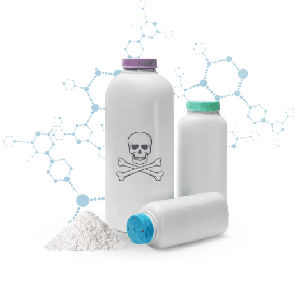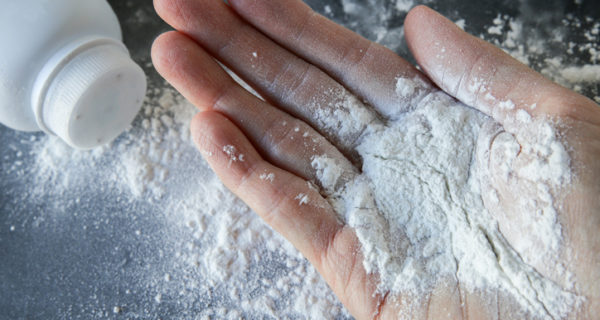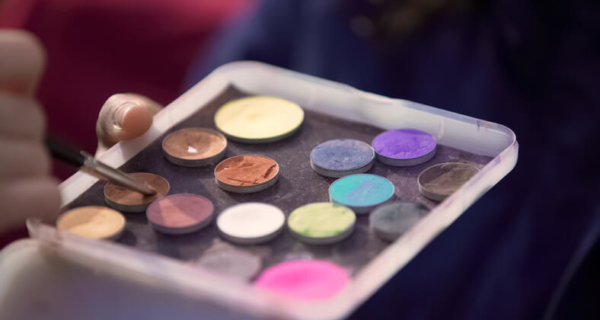Talcum Powder Overview
 Our talcum powder overview begins with the iconic product’s entry into the market nearly 100 years ago. Still one of the most common hygiene products available today, talcum powder is popular for absorbing moisture and preventing rashes. Since it’s made from a combination of magnesium, silicon and oxygen, talc seems harmless enough. However, studies link talc-based products with increased ovarian and cervical cancer risks. As a result, plaintiffs are filing lawsuits against the world’s leading talcum powder manufacturer, Johnson & Johnson. Plaintiffs say the drug giant knew about the association between talcum powder and cancer, yet failed to properly warn consumers. Since the FDA found asbestos fibers in the products during a random test in October 2019, the brand recalled 33,000 bottles of talcum powder. As of May 2020, J&J will no longer sell talc-based baby and body powders in the U.S.
Our talcum powder overview begins with the iconic product’s entry into the market nearly 100 years ago. Still one of the most common hygiene products available today, talcum powder is popular for absorbing moisture and preventing rashes. Since it’s made from a combination of magnesium, silicon and oxygen, talc seems harmless enough. However, studies link talc-based products with increased ovarian and cervical cancer risks. As a result, plaintiffs are filing lawsuits against the world’s leading talcum powder manufacturer, Johnson & Johnson. Plaintiffs say the drug giant knew about the association between talcum powder and cancer, yet failed to properly warn consumers. Since the FDA found asbestos fibers in the products during a random test in October 2019, the brand recalled 33,000 bottles of talcum powder. As of May 2020, J&J will no longer sell talc-based baby and body powders in the U.S.
Talcum Powder Overview: Popular Uses
While you can use talcum powder many different ways — as a deodorant substitute, dry shampoo, and to prevent rashes when sprinkled on babies’ bottoms — feminine hygiene remains quite popular. As a result, many women sprinkle Shower to Shower® body powder in their underwear each morning to maintain a fresh, clean feeling. However, talcum powder use and the higher risk of ovarian cancer is well-established after decades of research. For this reason, feminine hygiene is likely one of the most harmful talcum powder uses and should be avoided long-term.
Talcum Powder Overview: Studies Link Talc Use to Cancer
Researchers published the first study hypothesizing a link between talc use and ovarian cancer in 1971. Scientists at a lab in Wales dissected 13 ovarian tumors and found talc particles embedded in 10. Since 1982, an additional 20 studies found long-term perineal talcum powder use increases ovarian cancer risk by 33%.
Due to decades of research, many doctors now believe talc (a silicate) has inflammatory properties which contribute to cancer’s development. According to Dr. Daniel Cramer’s study published in the journal Cancer: “It is not clear whether this derives from the asbestos content of talc or from the uniqueness of the ovary, which might make it susceptible to carcinogenesis from both talc and other particulates.”
Talcum Powder Overview: Feminine Hygiene Risks
Currently, the odds of a U.S. woman developing invasive ovarian cancer in her lifetime is 1 in 75, according to the Ovarian Cancer Research Fund Alliance. However, genital talcum powder use raises that risk to 1 in 53, according to published epidemiological studies. And another study shows genital talcum powder use increases the risk of women developing epithelial ovarian cancer by 20-30%. Finally, 44% of African-American women used talcum powder for feminine hygiene in 2015. Even though plenty of evidence now exists, consumers still aren’t aware of talc risks.
One of the largest multinational talcum powder distributors, Johnson & Johnson, has sold talc-based products for over 100 years. Even now, Johnson’s baby powder and Shower to Shower body powder are some of the most iconic products the company sells. Although J&J now includes an inhalation warning label, there’s still no mention of the known ovarian cancer risk on its products.
Recent Johnson & Johnson Talcum Powder Lawsuits
Because Johnson & Johnson repeatedly failed to warn consumers about prolonged talcum powder use and the link to ovarian cancer, thousands of lawsuits are currently pending. Deane Berg filed the first lawsuit blaming her ovarian cancer diagnosis on J&J’s talcum powder in 2007. Since then, juries awarded the following plaintiffs multimillion-dollar settlements:
- Stephen Lanzo III, $117 million for mesothelioma, April 2018
- Joanne Anderson, $26 million for mesothelioma, May 2018
- 22 unnamed ovarian cancer plaintiffs, $2.12 billion, July 2018
- Terry Leavitt, $29.4 million for mesothelioma, March 2019
- Donna Olson, $325 million for mesothelioma, May 2019
- Patricia Schmitz, $10 million for mesothelioma, June 2019
Even after losing several lawsuits, Johnson & Johnson still markets talcum powder to women specifically for feminine hygiene. However, it hasn’t added a warning to its talc-based product labels. As a result, thousands of women developed ovarian cancer that could have otherwise avoided it.
For this reason, women are filing lawsuits for negligence, conspiracy, and failure to warn consumers about the dangers of using a seemingly harmless product as advertised. They demand justice by holding Johnson & Johnson responsible for pain, suffering, and potentially thousands of deaths. And finally, adding warning labels to inform consumers could help women avoid unnecessary risk.
Check your eligibility for compensation.
If you or a loved one developed ovarian cancer after using talcum powder, you may qualify for compensation from the manufacturer. Request your free case evaluation now to see if you may qualify.




